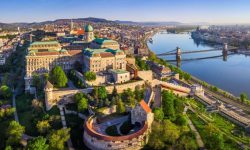Historic Square, Dubrovnik
Located in the heart of Dubrovnik’s charming Old Town – a UNESCO World Heritage Site, the Square of the Loggia is a lively gathering spot that features some of the city’s most famous buildings and public monuments. Here are just a few.

Roland's Column
Also known as Orlando’s Column, this stone monument stands at the end of the Stradun, Dubrovnik’s picturesque pedestrian thoroughfare, directly in front of the Church of St. Blaise. It was sculpted by Bonino of Milan in 1419 and named after Roland of Roncevaux, Charlemagne’s brave and legendary knight. It is believed that during medieval times the merchants used the length of the statue’s forearm (51.2cm or 20.2 inches) as a standard measurement, known as the Dubrovnik Cubit.

Church of St. Blaise
Beautifully Baroque and richly ornate, the Church of St. Blaise was designed by Venetian architect and sculptor Marino Gropelli. Completed in 1715, it was built on the site of the old 14th-century Romanesque church, first damaged by an earthquake and later completely destroyed by fire. The only surviving remnant was the gold-plated silver statue of St. Blaise, Dubrovnik’s patron saint. All the other gold and silver statues were melted by the fire, but miraculously, the St. Blaise statue survived. The church is often the center of festivals and celebrations, and is perhaps the most beloved church of the people of Dubrovnik.

The Clock Tower
The Clock Tower is a magnificent city landmark that stands at the eastern end of the Stradun. This elegant 31-meter timepiece overlooks Roland’s Column and Church St. Blaise. Originally built in 1444, it suffered serious damage from the earthquake of 1667 and continued to deteriorate over time. In 1920 it was rebuilt; the only original part of the tower is the bell, which weighs 2 tons. Two bronze figures, named Maro and Baro, flank the bell and strike it every hour on the hour. Tinged green from age, they are called “zelenci,” or “the green ones.”

Old City Walls
The dramatic walls that hug the city are Dubrovnik’s most famous feature. Take a casual stroll or join one of many walking tours to appreciate the spectacular views over the Adriatic and inwards over the Old City. These monumental walls were built in the 10th century to protect the city from pirates and other malevolent invaders, and were considerably fortified in the 13th and 14th centuries. At a height of up to six meters and in places as thick as six meters, the walls provided a solid defense. The Old City has fortresses at its four corners, which are the Minceta Tower, Revelin Fortress, St John’s Fortress, and Bokar Bastion.














